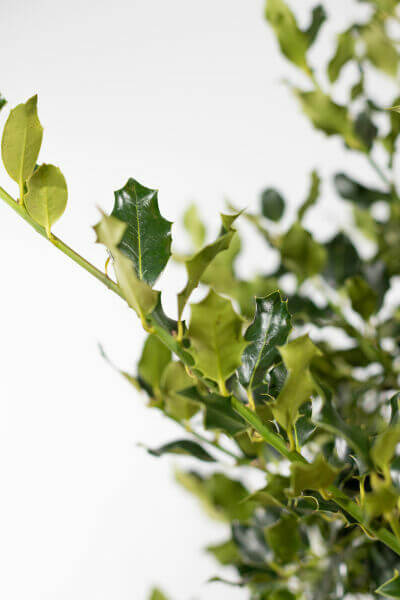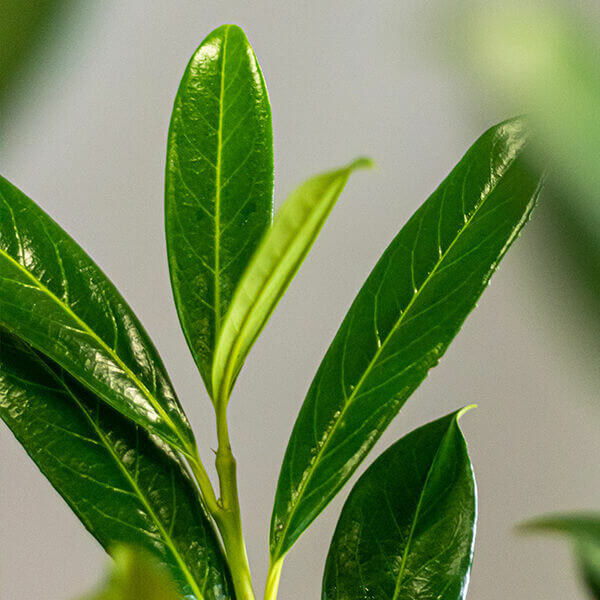Choosing The Right Hedging Plants
Choosing The Right Hedging Plants
Blog Article
Hedging Plants For Clay Soil
Enhance your garden's allure with lavish hedge varieties such as Yew (Taxus), Thuja, Laurel, Photinia, and Bamboo, commemorated for their structural integrity and environmental advantages.
Yew and Thuja provide evergreen protection and winter season durability, while Laurel provides quick growth and broad, aromatic leaves.
Photinia adds seasonal appeal with its lively red foliage, and Bamboo lends a low-maintenance, peaceful atmosphere.
These hedges enhance air quality, reduce sound, and develop tranquil, private spaces.
Correct planting, spacing, and upkeep guarantee energetic growth and environmental consistency.
Check out how these lush varieties can elevate your garden's charm and wellness.
Secret Takeaways
Transform Your Garden With Lush Hedge Varieties
- Select Yew for its dense, evergreen growth and exceptional durability.
- Opt for Laurel for its fast growth and broad leaves, guaranteeing fast personal privacy.
- Pick Photinia for its lively seasonal foliage, which turns a striking dark red.
- Utilize Bamboo for a low-maintenance, winter-hardy hedge with aesthetic appeal.
- Area plants 2-3 per meter and prune regularly for optimal growth and health.
Popular Hedge Plants
When transforming a garden with rich hedge varieties, it's vital to think about popular hedge plants such as Yew, Thuja, Laurel, and Photinia due to their special qualities and advantages.
Yew (Taxus) is extremely respected for its durability and dense, green development, making it a prime option for withstanding landscapes.
Thuja is kept in mind for its evergreen foliage and robust winter season durability.
Photinia includes seasonal vibrancy with red leaves that darken over time, creating vibrant visual appeal.
Laurel uses quick development and aromatic, broad leaves, suitable for quick privacy.
Additionally, Bamboo is an excellent choice for atmosphere, using a low-maintenance, winter-hardy option that improves the garden's aesthetic with its stylish, swaying canes.
These selections deal with a range of horticultural needs and preferences.
Advantages of Garden Hedges
Garden hedges provide a wide variety of advantages, making them an important addition to any landscape. These natural barriers are cost-efficient to implement and offer considerable wind security, boosting air blood circulation and adding to sound decrease. The dense foliage of hedges like Thuja and Beech guarantees personal privacy by blocking presence, creating a secluded and serene environment.
Hedges also play an important function in microclimate policy, providing a steady environment that cultivates plant growth and decreases temperature variations. Their complex leaf structures filter pollutants, enhancing air quality and contributing to a much healthier garden ecosystem.
Furthermore, hedges master noise decrease, absorbing and deflecting acoustic waves to lower ambient noise levels. This dual performance of supplying both acoustic and visual personal privacy enhances the total serenity and visual appeal of any garden.
Planting and Maintenance Tips
For an effective hedge, careful preparation of the planting area is important. Make sure the soil has proper pH and drain to support strong root advancement.
Space the plants appropriately for the picked species. Water the hedge often during its initial development stage, adjusting as needed with seasonal modifications.
Implement a methodical bug control and illness prevention technique, utilizing chemical or organic treatments when required. Frequently check for aphids, mites, and fungal infections.
Apply mulch to retain wetness and reduce weeds. Seasonal pruning promotes thick development and air blood circulation, essential for plant health.
Following these guidelines will help you cultivate a dynamic, properly maintained hedge that boosts the beauty of your garden.
Spacing and Trimming Guidelines
Spacing and Trimming Guidelines
Proper spacing and trimming are crucial for cultivating healthy, visually appealing hedges. Appropriate spacing makes sure each plant receives adequate nutrients, light, and airflow.
Follow these guidelines for optimum hedge maintenance:
- Spacing: Position hedge plants 2-3 plants per meter to encourage robust development.
- Pruning Strategies: Routine pruning is important for keeping wanted hedge height and shape. Cut brand-new growth in summer season and cut down older wood during winter.
- Seasonal Care: Adjust trimming schedules and techniques according to seasonal requirements to ensure plant health.
- Hedge Height: Routinely screen and trim to maintain the wanted hedge height and attain uniform aesthetic appeals.
Following these steps will guarantee your hedge prospers, improving both the appeal and functionality of your garden.
Choosing the Right Hedge
Picking the Right Hedge
Picking the proper hedge involves examining elements such as mature height, foliage density, and environmental strength. Successful hedge plant selection needs understanding each types' development characteristics and site-specific flexibility.
For instance, Yew (Taxus) offers exceptional longevity and thick growth, while Thuja is notable for its winter season resilience. In addition, considering upkeep requirements is essential; fast-growing types like Laurel or Privet demand routine trimming, whereas low-maintenance alternatives like Bamboo or Ivy might be more effective for those seeking very little upkeep.
Ecological factors such as soil type, light schedule, and moisture conditions must also direct the selection procedure. This cautious approach guarantees the chosen hedges will prosper, providing both visual and functional benefits to the garden landscape.
Delivery and Planting Advice
To ensure your hedge plants prosper, they should be delivered by specialized carriers and planted promptly upon arrival.
Follow these vital actions for successful planting:
- Soil Preparation: Enrich the soil with raw material to enhance drain and nutrient content.
- Planting Depth: Produce a trench twice the width and equivalent to the depth of the root ball.
- Watering Strategies: Water thoroughly after planting, keeping the soil consistently damp however not filled.
- Mulching: Use a layer of mulch to retain moisture and suppress weeds.
Customer Support and Service
Provided the vital function of prompt assistance in horticultural pursuits, our customer support team is offered six days a week through telephone, email, and social media to offer skilled guidance and promptly address any concerns. Their commitment to quick action times makes sure consumer complete satisfaction by dealing with inquiries related to plant health, optimal planting methods, and maintenance schedules.

Within 24 hr
This detailed support group, reinforced by an excellent 9.3/ 10 customer rating, highlights our dedication to enhancing the gardening experience for each client.
Often Asked Concerns
For How Long Does It Consider Hedge Plants to Establish?
Hedge plants usually require one to 3 years to become totally established, with the specific duration varying by types and growing conditions.
Effective care throughout this crucial period is vital for robust development. Consistent watering, alert weed control, and proper fertilizer application are critical in promoting strong root advancement.
For example, fast-growing types like Laurel might check here establish more rapidly, while slower-growing ranges such as Yew might take longer. Persistent upkeep accelerates the establishment procedure, leading to dense and healthy hedges.
What Are the Finest Hedge Plants for Personal Privacy?
The question of the finest hedge plants for personal privacy includes evaluating evergreen and deciduous choices.
Evergreen hedges like Thuja, Laurel, and Cypress supply year-round protection, ensuring continuous personal privacy.
In contrast, deciduous hedges such as Beech use seasonal personal privacy, shedding leaves in colder months.
Key maintenance suggestions for personal privacy hedges consist of routine cutting, fertilizing in spring, and correct spacing-- normally 2 to 3 plants per meter.
Additionally, consistent watering and diligent weed removal are crucial for promoting healthy, dense growth.
Can Hedge Plants Attract Wildlife to My Garden?
Yes, hedge plants can attract wildlife to your garden by providing essential advantages like shelter, food, and nesting sites, consequently boosting regional biodiversity. For circumstances, yew, holly, and laurel are outstanding for drawing in birds, while ivy supports a variety of insects.
However, it is very important to note that there are some disadvantages, such as increased maintenance to manage bugs and regular maintenance. Thoroughly choosing and preserving hedge varieties can help stabilize these advantages and disadvantages, ultimately cultivating a vibrant and sustainable community in your garden.
Are There Any Flowering Hedge Plants Available?
Yes, there are flowering hedge plants available that can improve the charm of your garden.
For instance, Elaeagnus, likewise understood as Olive Willow, produces aromatic white flowers in the fall, adding a touch of elegance.
Photinia, another popular option, showcases vibrant red leaves that mature into an abundant green, creating a vibrant visual impact throughout the seasons.
To ensure these plants prosper, it's important to practice correct pruning techniques and seasonal upkeep, such as trimming brand-new development in the summer and cutting back in the winter season.
These procedures will help keep the health and aesthetic appeal of your flowering hedges.
How Do I Avoid Pests in My Hedge Plants?
To prevent bugs in hedge plants, employ natural insect control approaches and preserve proper hedge care. Present helpful insects like ladybugs, which victimize harmful bugs, to create a balanced environment.
Regularly inspect your hedges for signs of problem and immediately get rid of any affected parts to prevent the spread. Ensure the health of your hedges by applying well balanced fertilizers and supplying sufficient water.
Use mulching to maintain soil moisture and appropriate spacing to minimize plant tension and promote robust development. These practices collectively help in lessening bug concerns and maintaining a healthy hedge.
Conclusion
In essence, choosing the right hedge varieties such as Yew, Thuja, and Laurel can transform any garden into a tranquil haven. These plants provide year-round plant, enhance visual appeal, and deal useful advantages like sound reduction and wind security.
Proper planting techniques, precise spacing, constant watering, and seasonal cutting are crucial for ideal growth.
Trusted shipment services and expert customer assistance ensure a seamless experience from purchase to planting, making it simpler than ever to raise your outside space.
Garden hedges offer a multitude of advantages, making them a valuable addition to any landscape. These natural barriers are affordable to carry out and offer significant wind defense, improving air circulation and contributing to sound decrease. The dense foliage of hedges like Thuja and Beech ensures personal privacy by blocking visibility, creating a tranquil and secluded environment.

Pruning Methods: Regular pruning is important for preserving desired hedge height and shape. Trim brand-new development in summertime and cut back older wood during winter.
Report this page